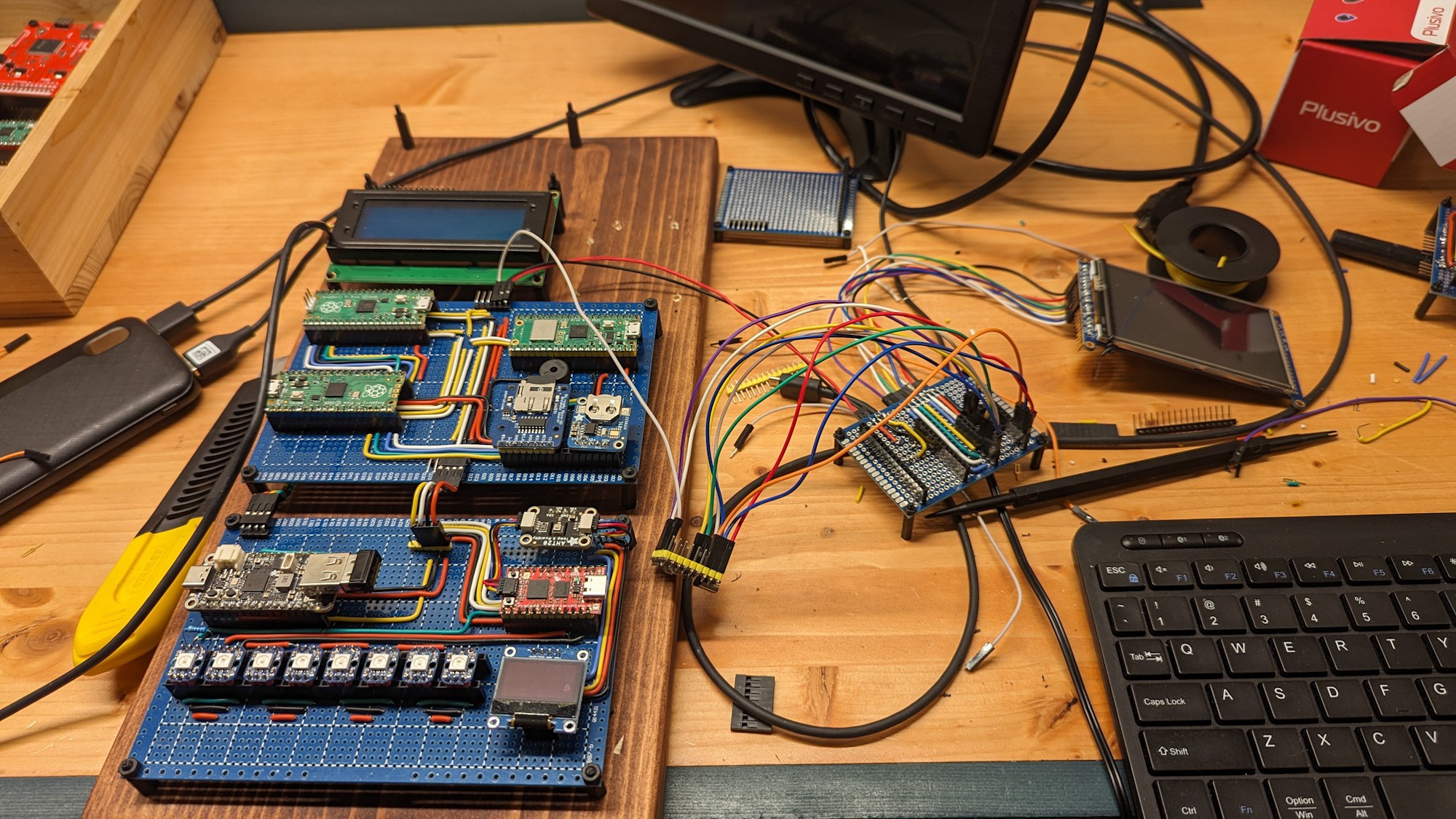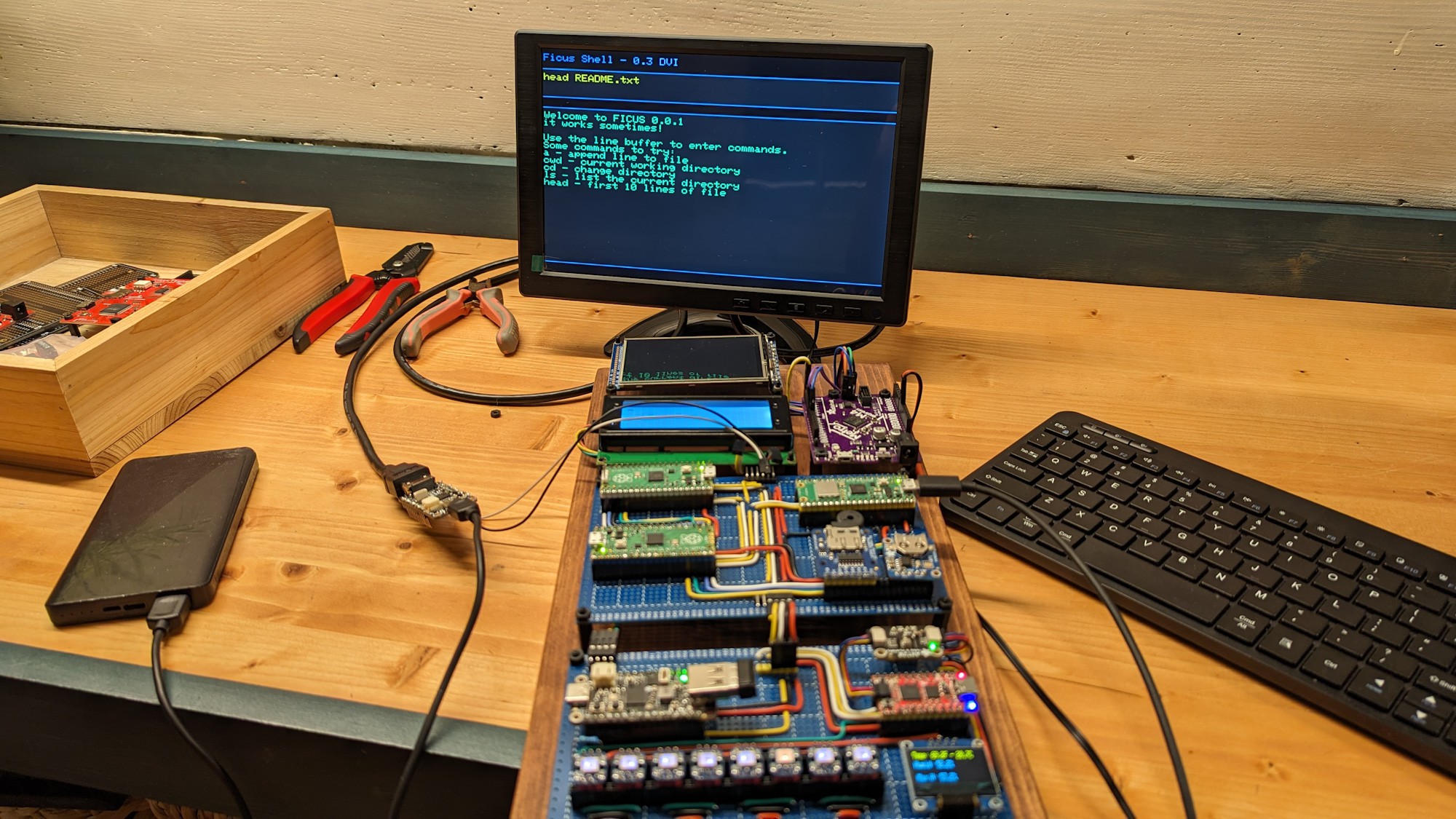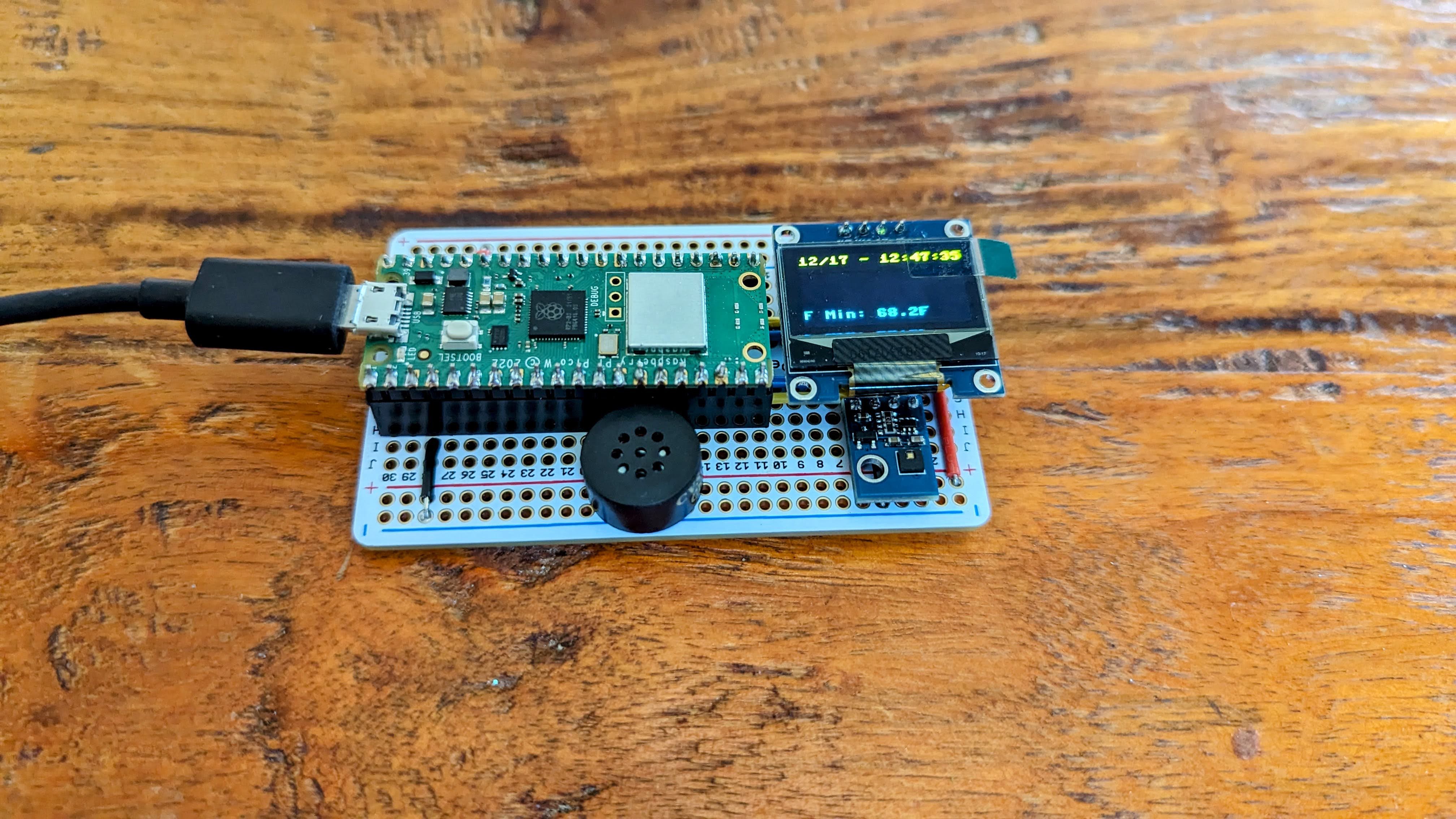I've been working on a homebrew computer using microcontrollers arranged in a custom hardware architecture and an operating system to drive it. It's been a non-linear journey that started with curiosity about how operating systems worked and took me down several Rabbit holes to end up with a piece that I'm pretty proud of. Most of all, it reminded me of how much I have left to learn :)
The utility of the computer is primarily as a display piece and a learning experience. While it meets the definition of a computer, it's not a good computer. It has a 1-bit data bus, and the display has a ~2HZ refresh rate, but it makes a great conversation piece! The process has been fun and rewarding so far - I made a video documenting context and the process.
Design
The overall design philosophy for the Ficus architecture is based around the metaphor of its name-sake tree - with its complex, interconnected roots and branches. The reference implementation for the Ficus architecture is shown below. Each MCU represents a 'node' in the Ficus tree and performs a specific function.
Nodes
The reference implementation is made up of 7 nodes and an accompanying web app.
Ficus Canopy
This is the display node for the Ficus reference implementation. It processes incoming shell commands and responses and displays them on a 3.5' TFT screen. It features an Adafruit Metro M4 Express featuring ATSAMD51 for processing and displays on a 3.5" TFT 320x480 + Touchscreen Breakout Board w/MicroSD Socket - HXD8357D. The code is developed in C in Arduino IDE and depends on Phil Hower's Arduino-Pico core and Adafruit's Display library.
Ficus Fig
Named after the fruit of the Ficus tree, this node implements user shell functions for the operating system. The reference implementation uses a Raspberry Pico, but any similar RP2040 with at least 2 UART connections would work. The node listens for incoming shell requests, looks across its designated search path (including user space programs) for a matching command, and executes it. Results are sent back to the router node for distribution to other nodes. This node is implemented in MicroPython for flexibility.
Ficus Keys
This node provides USB keyboard input and command line editing. It is built on an Adafruit Feather RP2040 with a USB Type-A Host. The node listens for incoming scan codes and converts them to ASCII. Key press events are sent to the Trunx node for processing and displayed on an LCD screen. The edited command is sent to the Trunx for processing when the user presses enter. The code is developed in C in Arduino IDE and depends on Phil Hower's Arduino-Pico core and TinyUSB.
Ficus Leaf
This node provides environmental monitoring and blinkin' lights for user feedback. It's built on a Sparkfun RP2040 Pro Micro, but any RP2040 should work fine. The software is implemented using Adafruit's CircuitPython for hardware compatibility. This node listens for activity from the keyboard module and reacts to user input via the blinkin' lights. Additionally, it monitors an Adafruit AHT20 - Temperature & Humidity Sensor Breakout and displays current and record temps and humidity on a 0.96-inch OLED I2C IIC Display Module 12864 128x64 Pixel SSD1306.
Ficus Roots
Roots reach outward, and this node provides essential networking support to the Ficus reference implementation. On startup, it connects to the Ficus Web App, requests a time update, and distributes that time across the data bus. If not online, it will read the current time from a battery-backed PCF8523 Realtime Clock breakout on an i2c connection and distribute that time. Since the PCF8523 is known to drift, the Roots node will overwrite PCF8523 time with network time when received. This node is implemented in MicroPython for flexibility.
Ficus Trunx
Ficus is built on a 1-bit data bus, and most nodes are restricted to two UART connections at a time. This node is a primary routing node that is responsible for routing messages to the correct destination. In most...
 Shane C Mason
Shane C Mason












Your Ficus project sounds like an amazing blend of creativity and technical exploration! The metaphor of the Ficus tree, with its interconnected nodes, is a clever design philosophy, and even with its limitations, it clearly serves as an impressive learning tool and conversation piece. I love how you've integrated different technologies, from microcontrollers to Python Flask, and embraced the fun of the process. Keep pushing those boundaries—it's projects like this that make innovation exciting! http://e-bikeonlinesales.com/